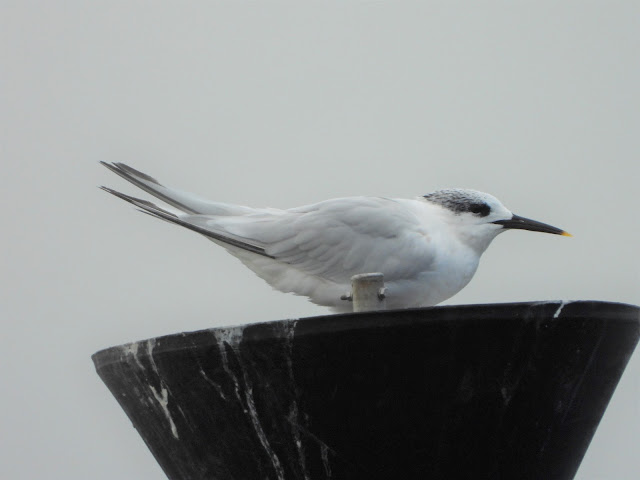A Tern's Tale
Sandwich terns can be seen all around the Sussex and Hampshire coast. Most migrate here for the summer to breed, but we see smaller numbers spending the winter in the area too. In the spring and summer they sport black plumage on their heads with a shaggy crest at the back. After the breeding period the black recedes and they are left with a white forehead. They are a distinctive species, being the largest type of tern to commonly occur in the area, and have a black bill with a yellow tip.
While standing on Bosham Quay on the 29th of September a sandwich tern flew in and landed atop a post (pictured above). It used this position as a fishing platform, and would dive off to catch a fish from the harbour before returning to the post. After a couple of successful plunges it moved to a closer post.
This new position appeared to be a prime fishing spot. It was plain to see when a potential catch was in sight, as the focus would heighten and posture change ready for a dive.
The flat top to the post allowed clear views of the entire bird, and you may have noticed the rings on the legs of the tern:
This bird was part of a Dutch ringing scheme to monitor the dispersion habits of its species. I submitted the information on the rings, and got sent the life history of this individual. It hatched in 2013 and has since been seen as far north as Middlesbrough, and as far south as Cadiz in southern Spain. It is no stranger to Chichester Harbour, having previously been seen off Hayling Island in 2017, and at Itchenor in 2018. All of the Chichester Harbour records have been during the period of autumn migration, so this bird may well have been travelling towards its wintering grounds.
Many migratory birds depend on key staging sites where they can stop and feed during their travels. Such areas can shape the evolution of entire species, as without them they would not be able to travel between their wintering and breeding areas. We are fortunate to be able to witness the spectacle of migration around the south coast. And thanks to ringing studies such as this, we have some knowledge of the remarkable journeys that are made. Photos were taken and kindly provided by Les Phillips.
- Hugh Baggaley




Comments
Post a Comment